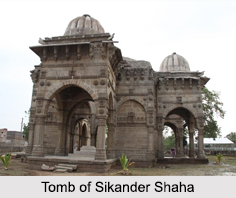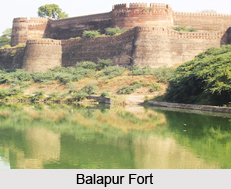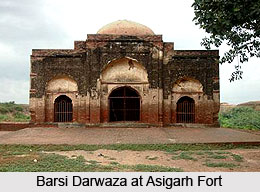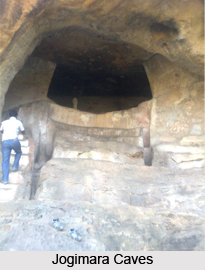 Tomb of Sikandar Shah is a mausoleum built by Gujarat Sultan Bahadur Shah in honour of his brothers and predecessors including Sikandar Shah in 1527. It is situated before the entry to the Champaner Archaeological UNESCO site near Halol in the Panchmahal district of Gujarat. It is also known as "Sikandar Shah Maqbara". This tomb is the burial place of the last Sultan of Champaner. This is a 488 year old huge stone structure built beautifully here. It has the mark of sultanate history in the Gujarat province. Tomb of Sikander Shah is remarkable in its aesthetics and craftsmanship.
Tomb of Sikandar Shah is a mausoleum built by Gujarat Sultan Bahadur Shah in honour of his brothers and predecessors including Sikandar Shah in 1527. It is situated before the entry to the Champaner Archaeological UNESCO site near Halol in the Panchmahal district of Gujarat. It is also known as "Sikandar Shah Maqbara". This tomb is the burial place of the last Sultan of Champaner. This is a 488 year old huge stone structure built beautifully here. It has the mark of sultanate history in the Gujarat province. Tomb of Sikander Shah is remarkable in its aesthetics and craftsmanship.
History of Tomb of Sikander Shah
Sikandar Shah, the Gujarat Sultan was a great ruler of his time. He was killed by Imad-ul-Mulk, Khusqadam in the year 1526 AD. His dead body was buried here thereafter. His brother named Nasir Khan and Latif Khan were also buried here. This tomb stood here as the land mark of the Sur Dynasty later. They were the very great rulers in the Gujarat province. The Sur Dynasty came to an end after the death of Sikandar Shah.
Architecture of Tomb of Sikander Shah
Tomb of Sikander Shah is a huge stone structure built in sand stones. It is built on the Islamic pattern of architecture. The single storied sandstone mausoleum has two central and five small domes. It has got a huge arched gateway. The main building has a pillared corridor all around this tomb. It has two chambers. The interior is adorned with floral patterns and geometric designs especially on porches and pillars. The central area was left for the tomb. Its top has got a beautiful circular dome. This dome is the highest and the largest dome. The outer structure has many stone art works on this building; these are mostly found on the top areas of this tomb. There is a single grave on one side of a chamber with a low pillar near it which indicates that it is dedicated to a martyr. In other chamber, there are no graves. These chambers had once the graves of the brothers of Bahadur Shah; Nasir Khan and Latif Khan who had also died in 1526.




